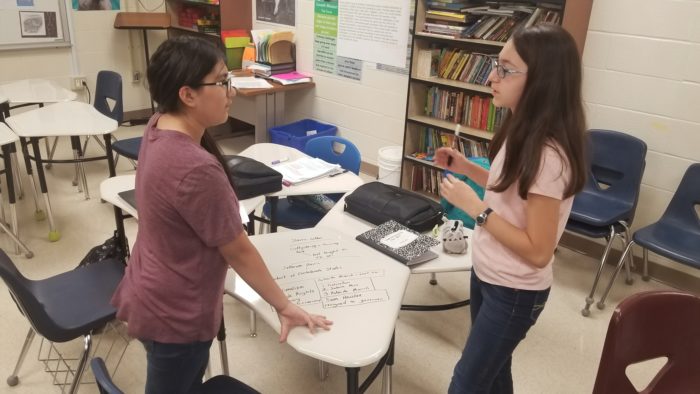
In this post, I share how to prepare students for peer tutoring, with advice on training tutors to strategies for pairing specific peer groups based on assessment data and student strengths.
Last week, I discussed why peer tutoring works for my 7th grade students. From encouraging learners to stretch out of their comfort zones and share what they know to developing higher-order questioning skills, this research-backed learning strategy boosts understanding and engagement on both sides of the peer-tutor relationship.
These suggestions are based on my own experiences in the classroom, and I encourage teachers in grades 4-12 to adapt these guidelines to meet the needs of their students and classroom!
How to prepare students for peer tutoring
Ensure Peer Tutors and Students are Trained
I have loosely based my tutorials for peer tutoring on the AVID model, which utilizes socratic and inquiry process methods to push students’ deeper thinking. The AVID Tutorials structure provides a flexible framework that can be adjusted to fit the needs of any classroom. This structure takes time to master, so training students and tutors on one step of the process at a time helps break down the larger vision into smaller, manageable chunks.
Establish Structure and Outcomes
Students need clear expectations and a definition for what success looks like after a peer tutoring session is complete. Providing sentence and question stems assists students in creating meaningful, academic conversations.

Strategically Group Tutors and Students Utilizing Platform Data
Assign each student group a tutor who has previously demonstrated mastery in the specific content area or cognitive skills that are being focused on. It is also important to keep in mind students’ strengths and weaknesses when you group them. Some tutors may have demonstrated mastery on a topic but struggle to speak in front of a group; this student may be more suited for one-to-one tutoring.
Incorporate Digital Tools that Support Peer Tutoring
A few digital tools that I have used to support peer tutoring include:
- Piazza —anyone can ask and answer questions, and conversations are available long after a session ends for students to access when they’re at home
- CueThink —peer-to-peer application for solving math problems
- Peergrade — allows students to grade one another’s work and provide feedback
- Padlet — allows students to create an online bulletin board that displays information for any topic
- Twiddla — an online whiteboard tool that enables students to digitally markup and share texts and images
Teacher Reflection
Since using peer tutoring, I’ve witnessed students become independent learners and thinkers, use technology purposefully, and establish the mindsets that lay the groundwork for success after high school. The most impressive outcome, though, has been their development of problem-solving as a team.
These individuals, aged 12 and 13, have acquired the power to collaborate on levels that reflect the real-world and joint action taken by adults. There’s no doubt in my mind that this proficiency will be a key asset to students as they engage in collaborative relationships in high school and long after.
Read about the student benefits of using peer tutoring as a learning strategy and find more teacher tips and tools under educator resources.

